Media | Articles
Exclusive: Supercars take over Space Shuttle landing strip

One of the biggest problems the Space Shuttle landing strip at Cape Canaveral faced in its 27 years of use was the Least Tern, Latin name Sternula antillarum: a smallish, black-capped, gray-and-white seagoing bird, sort of a small seagull, found near Florida’s coasts.
Birds have always been an issue at the 500-acre Shuttle Landing Facility—cranes, hawks, pelicans, eagles, you name it. But the little tern is an unlikely troublemaker. It seems the thousand-foot runoff areas at each end of the SLF was once mottled gray, a perfect camouflage for tern eggs, and Least Terns are colony nesters. So terns by the hundreds, perhaps thousands, flocked to the strip’s ends to propagate the species. To have the Space Shuttle landing on terns and tern eggs—well, that just wouldn’t do.
As the strip’s official biography says, “To solve this problem, the overruns were painted black. [But] since the black paint on concrete could not last from year to year, the overruns are now paved asphalt, which is naturally black and doesn’t have any properties that are appealing to the Least Terns.” Your tax dollars at work.
That still-black asphalt is where we’re gathered today: Porsches, Chevrolet Corvettes, Audis, a Lamborghini, a McLaren, a Ferrari, a Dodge Hellcat Charger, a blue Ford Mustang that is going to surprise the hell out of all of us, and multiple other cars, all brought to test their manufacturers’ claims. They came from as far away as Northern California.
The event in question is “straight-line aerodynamic testing.” It takes place on the Johnny Bohmer Proving Grounds at Space Florida’s Launch and Landing Facility, which is the new name for the SLF, located at Kennedy Space Center. Here, drivers have a chance to top-speed their cars in a 2.7-mile run, with tow trucks, paramedics, and fire engines at the ready. Prices vary per program. Suffice it to say entry is not cheap but reasonable.
Marketplace
Buy and sell classics with confidence
If Bohmer sounds familiar, it’s probably because his 2006 Ford GT, nicknamed The BADD GT, set a world record for a licensed, street-legal, air-conditioned car. This one has 2700 hp and launched Bohmer to a 310.8-mph pass down the strip. You can watch the pass below:
The Launch and Landing Facility hasn’t seen a Space Shuttle since the breed’s final flight, on July 21, 2011, when Atlantis brought down the curtain. The SLF saw 78 missions in all, the first being a Challenger landing in 1984. (The Shuttle shown here in photographs is a training mock-up, Inspiration, now used only for display. It needs work.)
Bohmer started his test program here. He put it together in 2011, he says, “for use by mostly manufacturers and race teams. I wrote all the rules, pretty elaborate stuff.” Our visit came on the first top-speed day he’s done in nearly two and a half years. The rest of the site’s tests, which occur almost daily, are slower and more pedestrian, punctuated by some private go-fast work by, among others, Bugatti and Hennessey.
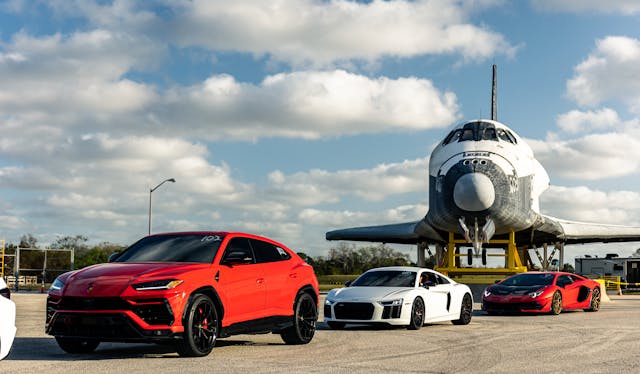
“I developed this entire testing program,” Bohmer says. “As you can see, there’s a lot of moving parts to this operation. About 99 percent of what we do is OEM testing. Boring stuff. Last year we did probably 300 days. Manufacturers do straight-line testing and testing for the EPA. Cars, race cars, school buses, tractor-trailers. We can get two days of testing done in one 24-hour period. Most never get over 70 mph, but at one time or another, pretty much everybody has been out here doing high-speed testing.” He’s a consultant for many firms that visit. After all, nobody has driven a street car faster than he has.
“One company has exceeded 400,000 miles of testing here. And that’s just one company—we have a lot with 80,000 to 100,000 miles.”

As for the runway: It is 15,000 feet long, with 1000 feet of tern-deterrent blacktop at each end, one of the longest airstrips in the world. (Top honors go to an 18,045-foot, high-altitude strip in Tibet.) The runway’s 1974 construction cost $22 million, about $138 million in 2023 money. The center is Portland cement 20 inches thick, feathering to 14 inches at the edges. The surface is slightly crowned for rain runoff, so test runs today will be done on one side of that crown, where the cement is essentially flat.
By the way, the BADD GT isn’t here today. Bohmer says managing the test and driving is too much combined responsibility—“When I run, I just rent the facility for myself. That way, if I break something, I don’t ruin anybody else’s fun.” But the car will be back. Bohmer thinks he can hit 333 mph.
Not counting the paved shoulders, the JBPG strip is 300 feet wide—a football field—though one Shuttle pilot famously remarked that he wished it were half as wide and twice as long. The strip was grooved side-to-side for rain runoff, 8000 miles of grooves. But they did too good of a job. The grooving’s sharp edges damaged Shuttle brakes and tires, and until a solution was found, landings moved to Edwards Air Force Base in California, which meant the Shuttle had to be shuttled back to Cape Canaveral aboard a Boeing 747.

Those grooves eventually received a treatment much like shot-peening, to dull the edges, and it worked. That effort and weather have smoothed the grooves to where a driver can’t feel them at speed; you merely hear the tires sing. There are zero bumps. Today’s run brings no tire failures, so it must work.
With the environmental concerns at the Bonneville Salt Flats and the nation’s few remaining dry lake beds, the Bohmer facility may be the safest place to top-speed vehicles in America. Of course, the moats to each side of the strip are full of alligators, which like to sun themselves on the track, so there’s that.
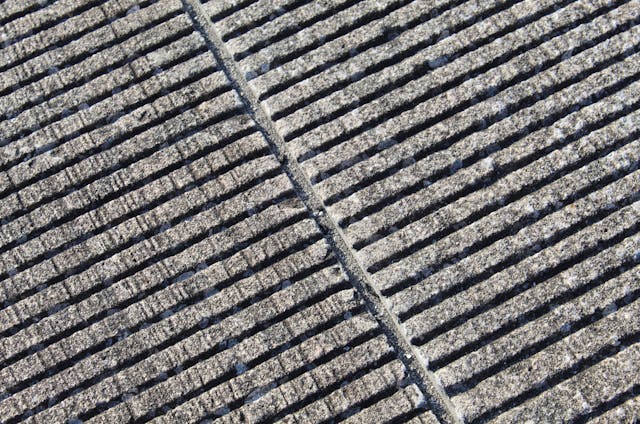
***
It’s not yet dawn when we gather at the Kennedy Space Center credentialing office—everyone has had to pass background checks in advance. After that, we caravan to the runway, a journey that takes about 15 minutes. Once there, we congregate at one end, near Bohmer’s trailer, as the International Mile Racing Association sets up timing equipment. Drivers, of which there are 18, will do a standing half-mile, then a mile, then 2.3 miles, and finally, 2.7 miles, which is the distance Bohmer figures leaves enough room at the end to stop safely, plus a modest buffer.
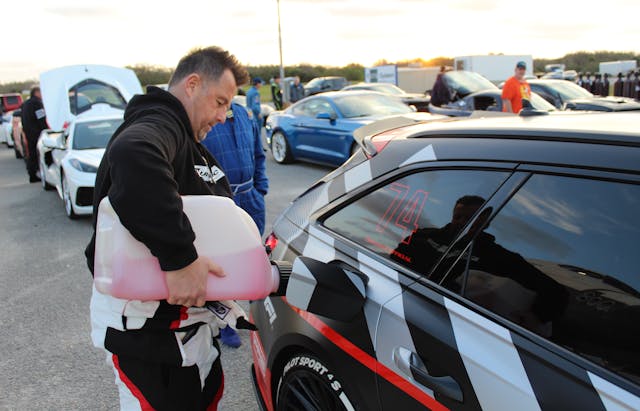
Really, it isn’t as exciting as it sounds. The cars launch hard and swim through the gears until they pass the timing markers. Then they do a 180 and use the other side of the runway as a return road. Speeds are relayed back to the starting line and entered on a white board with a blue marker.
Top speed at the half-mile: a blistering 172.658 mph, achieved by Maxwell Logan’s Lamborghini Aventador SVJ. The car’s only modification is a carbon-fiber hood and a seemingly wide-open exhaust that sounds . . . well, let’s say invigoratingly unpleasant. In the 2.7-mile leg, it ran 215.249, fast time of the day.

Logan really wanted to beat R.J. Valentine’s 214.341 in the 2.7-mile run, which came in a Porsche 918 Spyder. The car is stock, Valentine says, adding, “I barely know how to drive it.” Unlikely, since he has a class win at the Rolex 24 at Daytona endurance race.
Seven other cars managed to top 200 mph: a Dodge Viper, a breathed-on Audi RS6, a Superformance Cobra, a pair of C7 Corvettes, an Audi R8, and a McLaren 720S. Honorable mention goes to a Ford Mustang GT with a 5.0-liter V-8 and Whipple Stage 2 supercharger; the owner says he added a lowering kit and a Borla exhaust but changed nothing else. The car went 190.933 mph.
Birds were a concern. John Canal backed off in his Viper (200.017 mph) out of reflex when he saw one coming at 190. “A bird that size would have come through the window,” he says. Propane cannons are fired off periodically to scare birds away. They do not appear to work that well.
By all accounts official and otherwise, no Least Terns were hurt, no eggs smashed, no alligators run over. The only mechanical issues were a loose wire in the Superformance Cobra (203.767 mph), and an axle problem with the Dodge Charger Hellcat (180.400 before it broke). Bohmer isn’t sure when the next top-speed test will take place; maybe this summer or fall, he says, or maybe not. His company’s website is jbprovinggrounds.com.
***
Check out the Hagerty Media homepage so you don’t miss a single story, or better yet, bookmark it. To get our best stories delivered right to your inbox, subscribe to our newsletters.
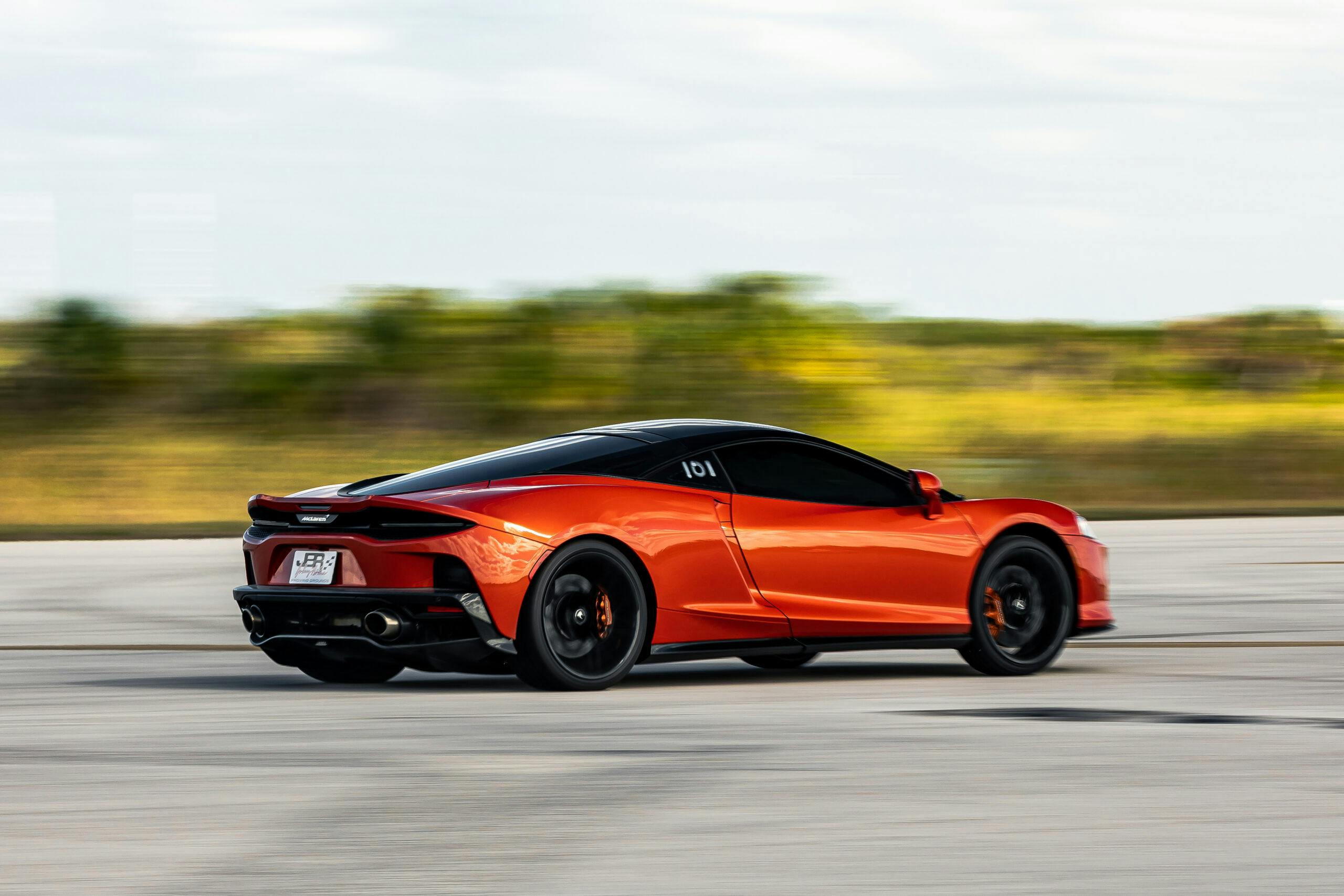
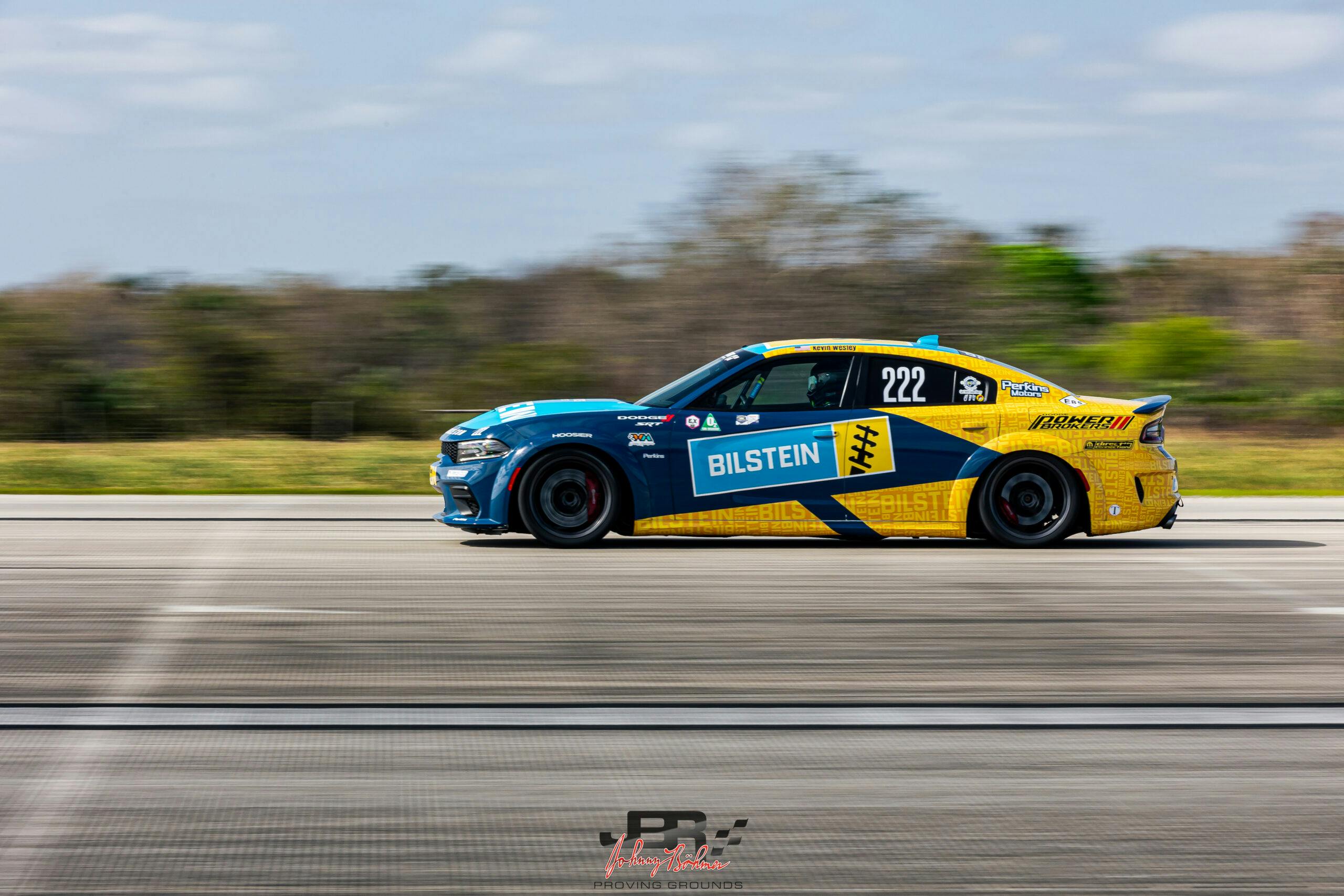
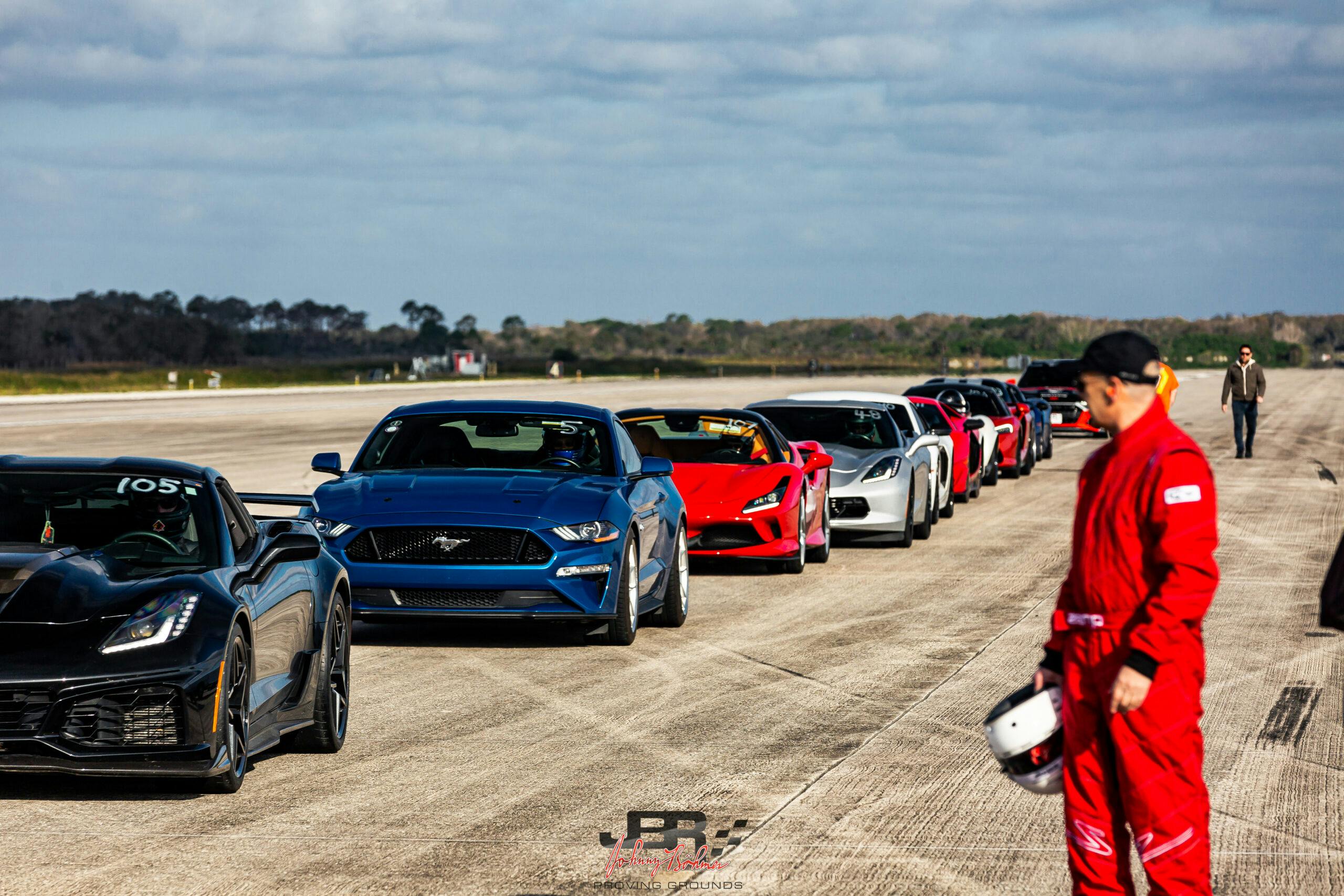
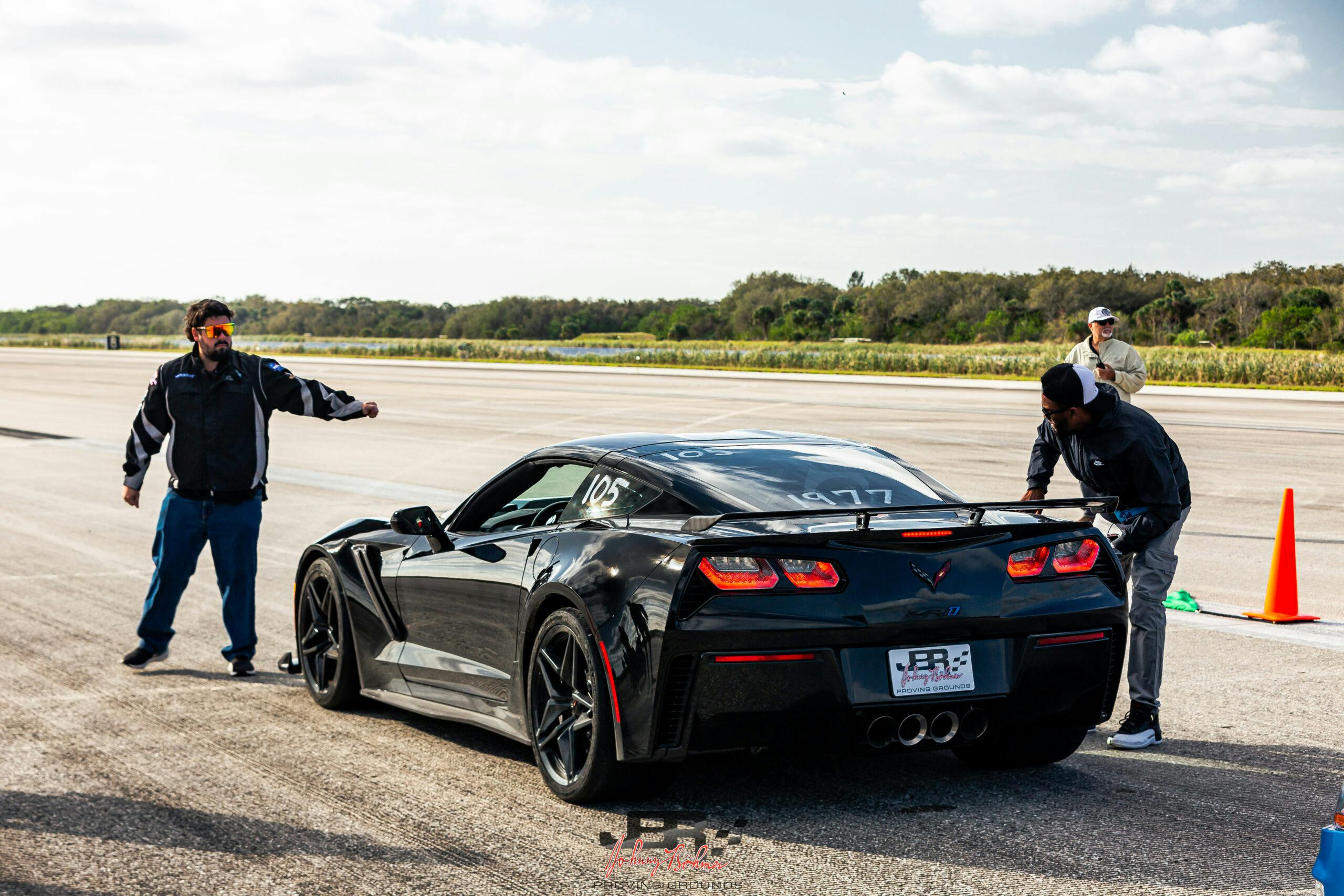
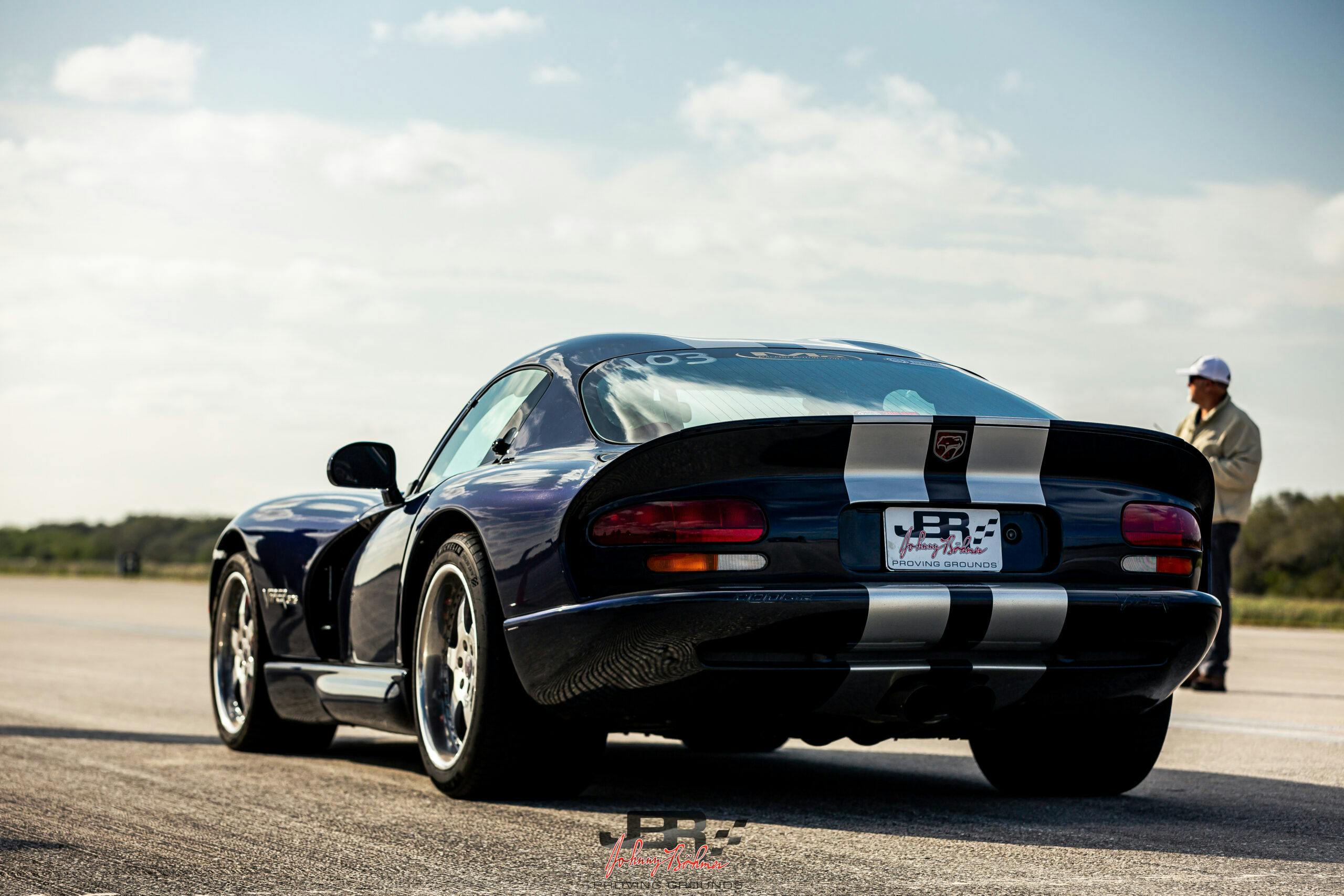
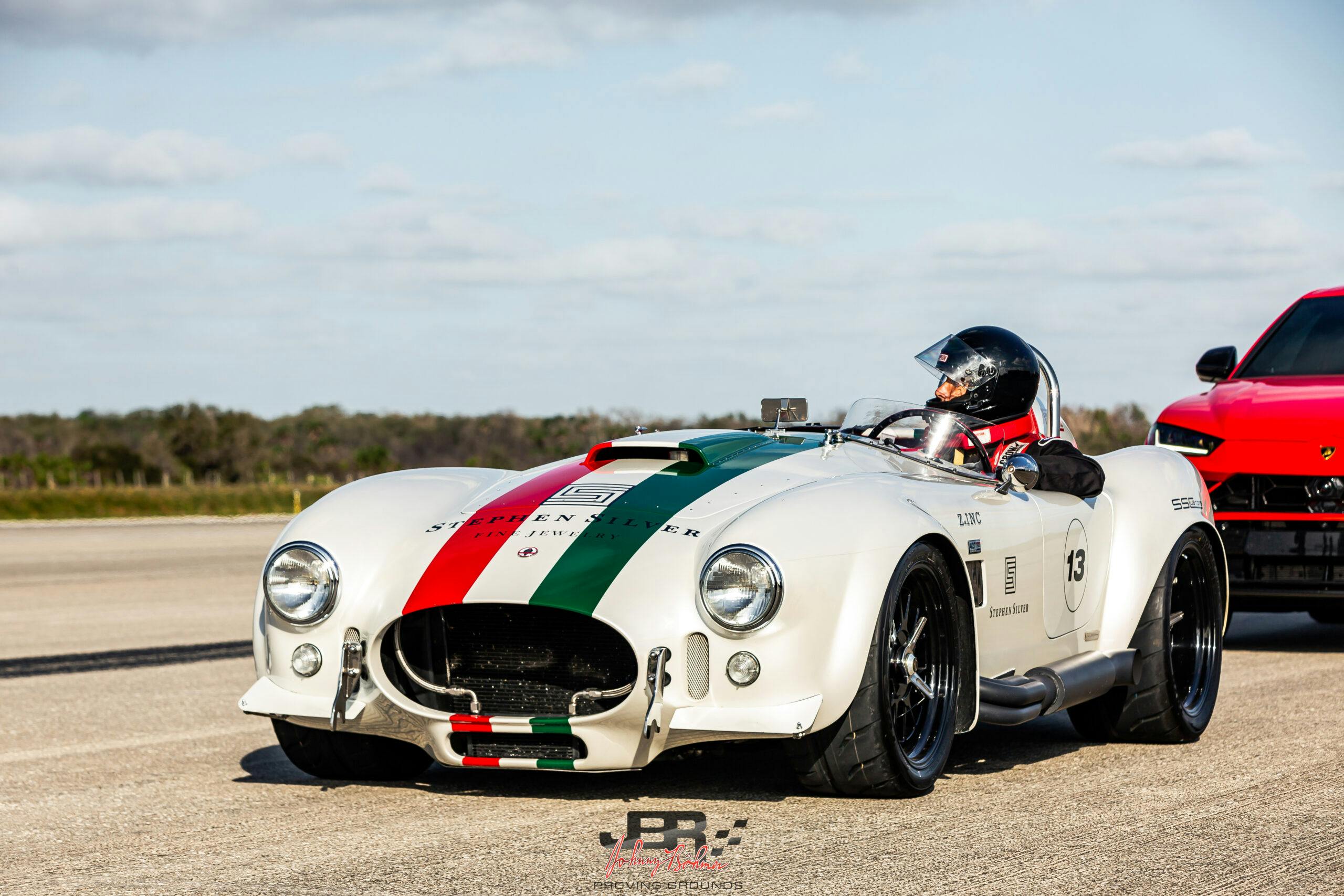
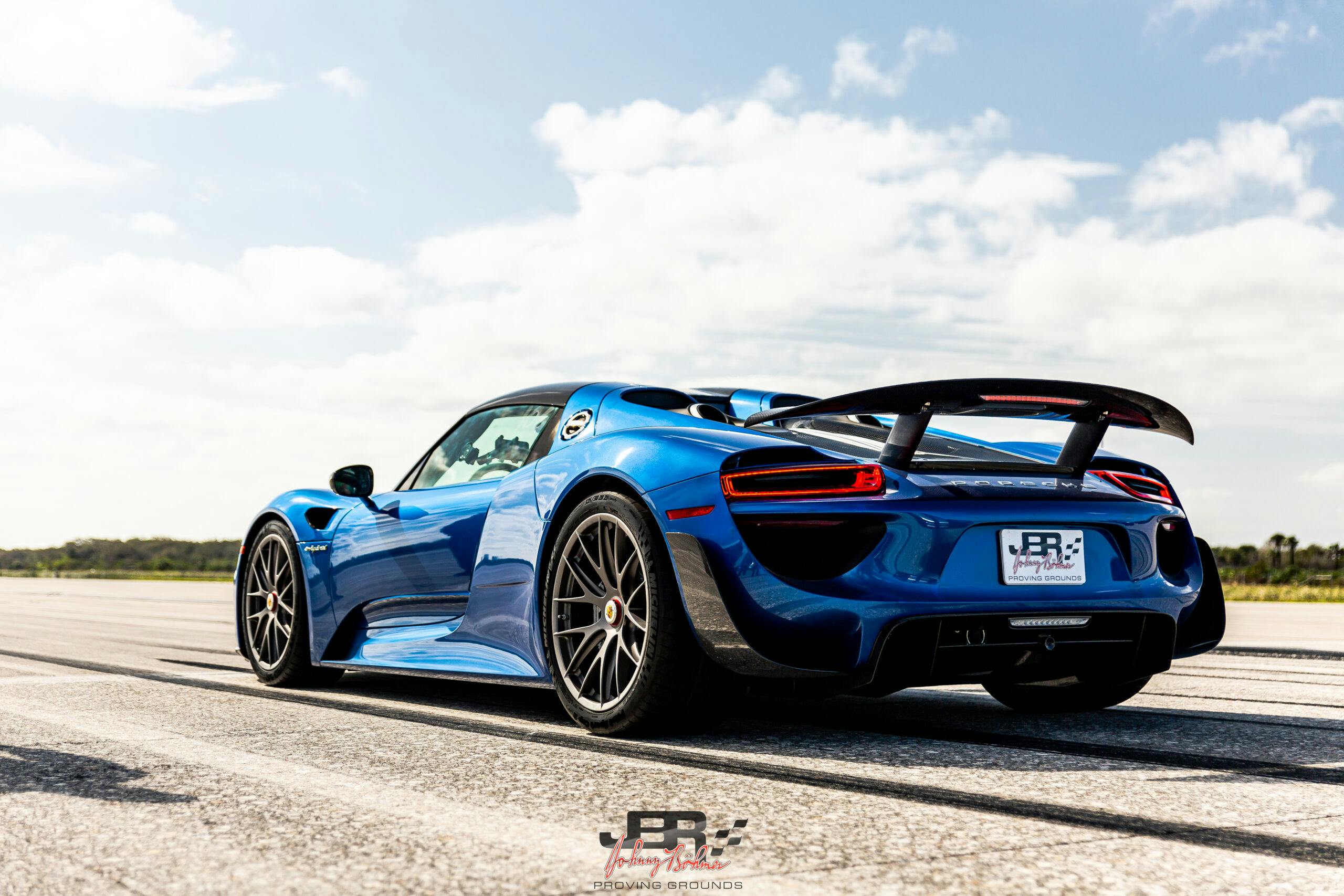

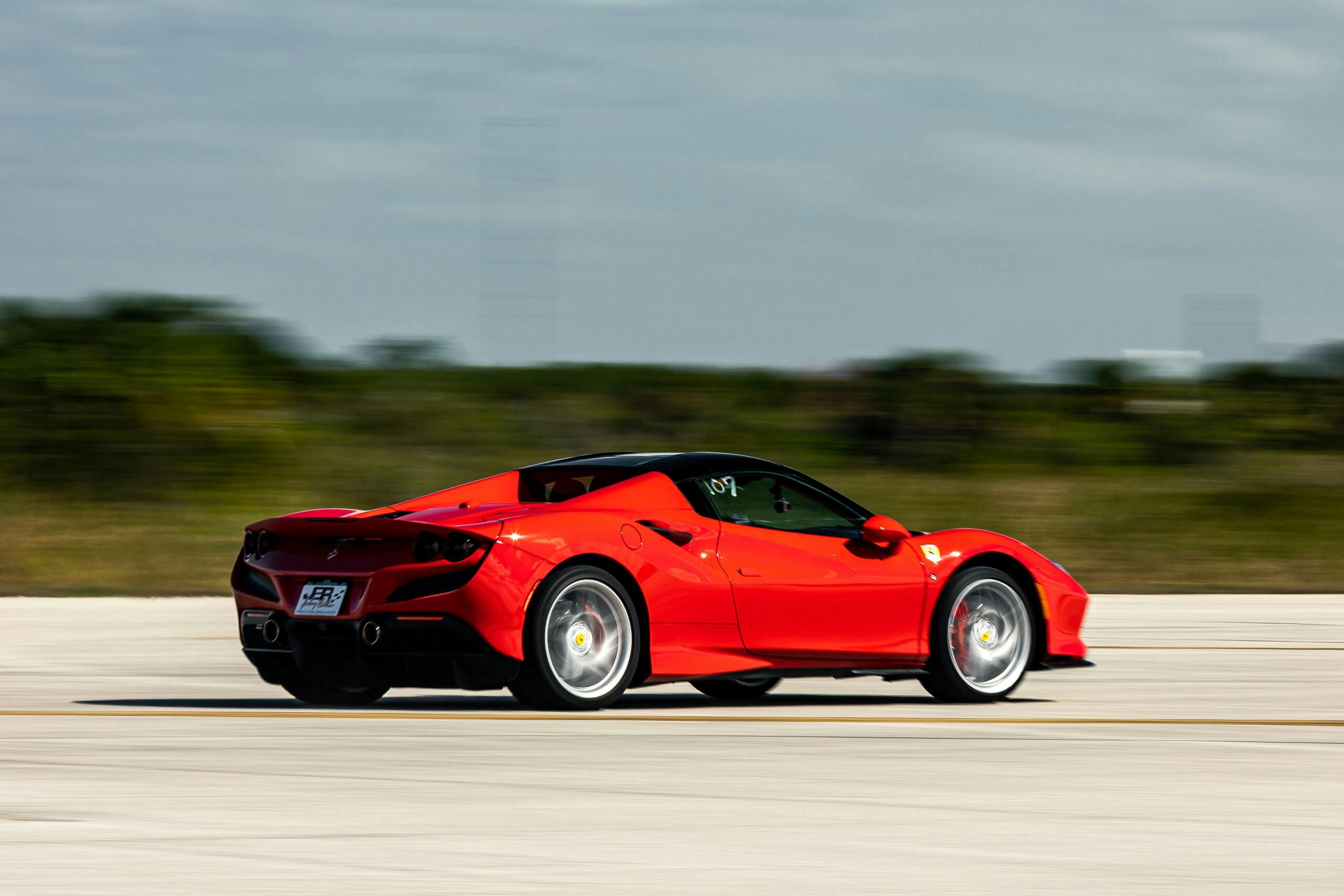

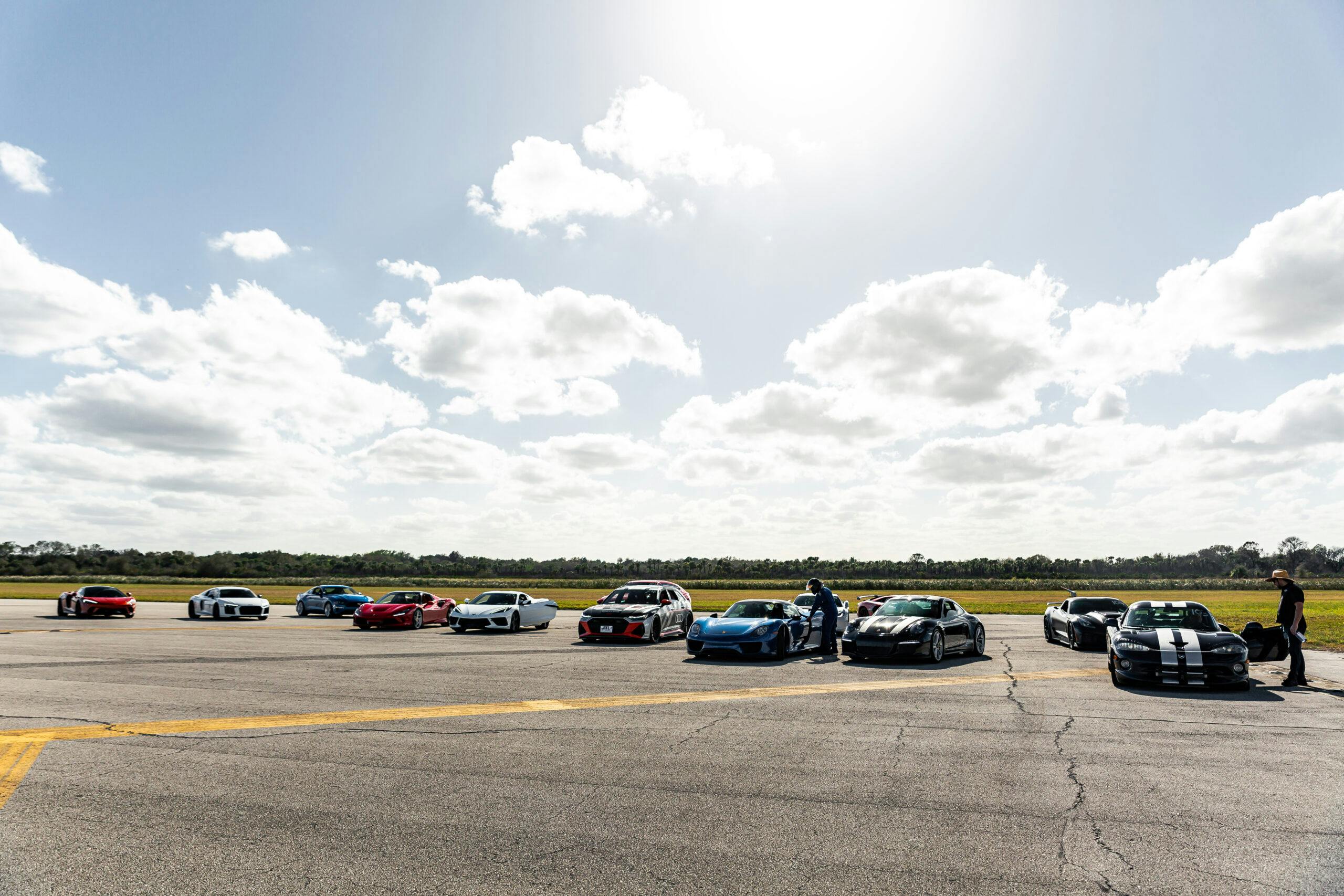

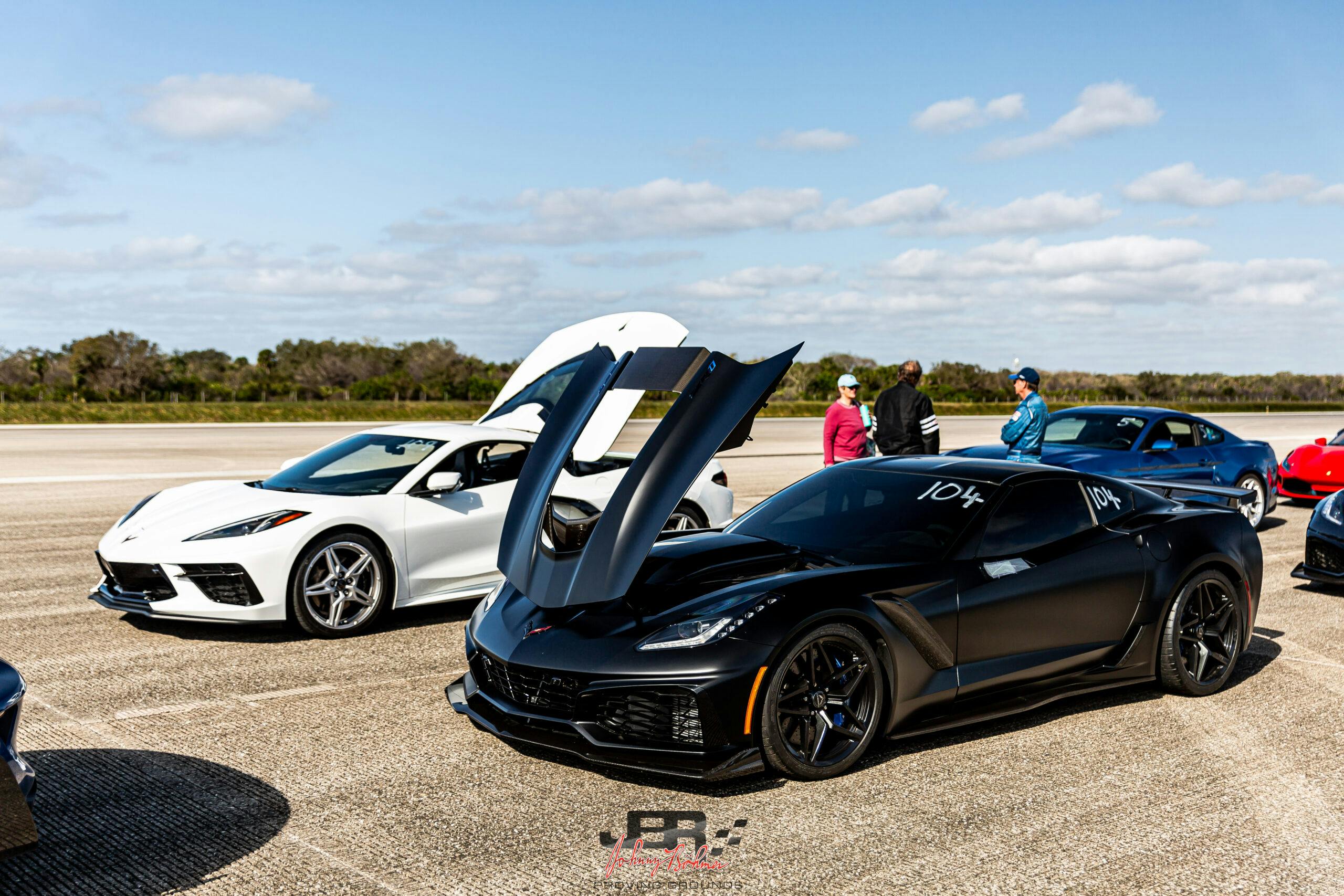




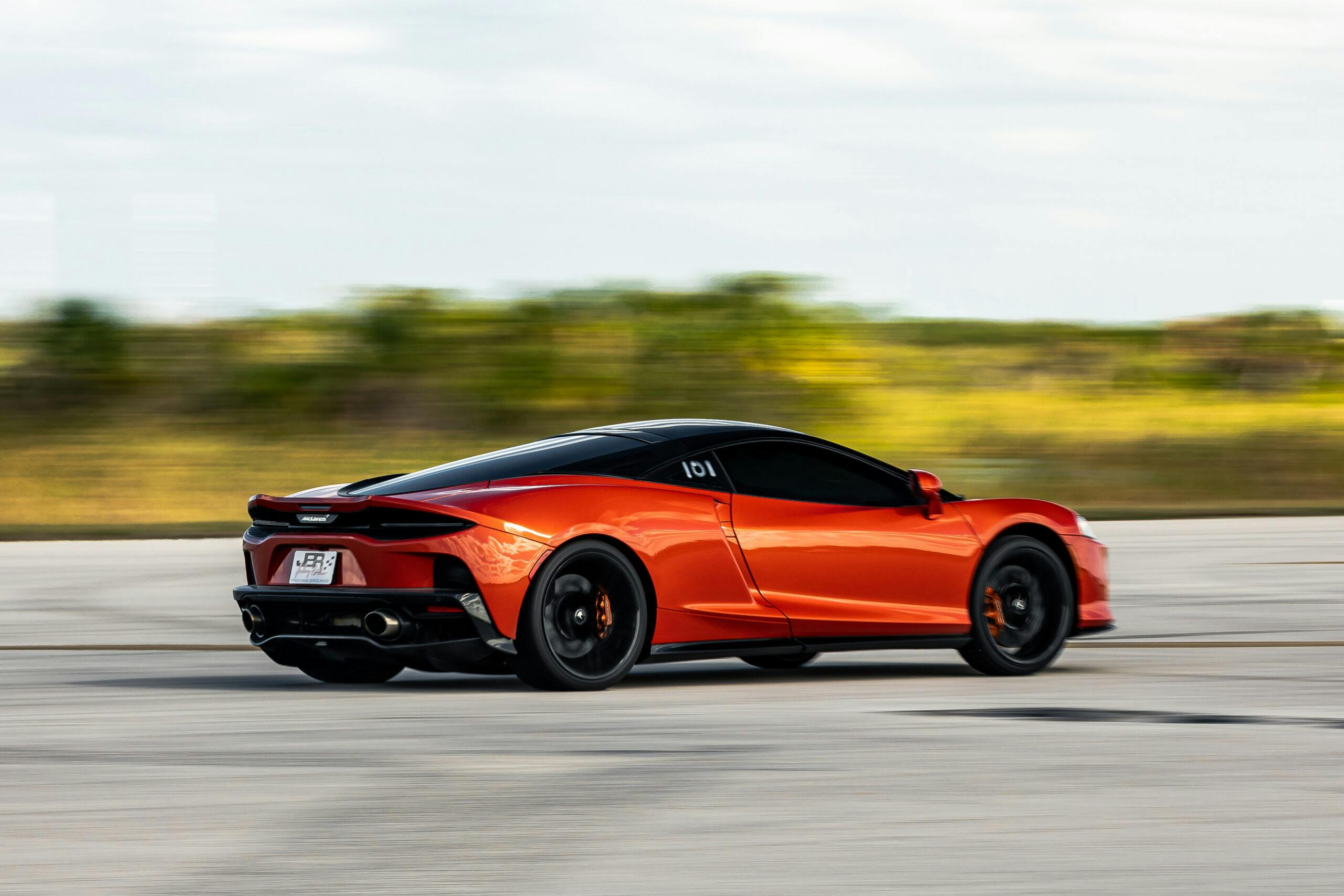

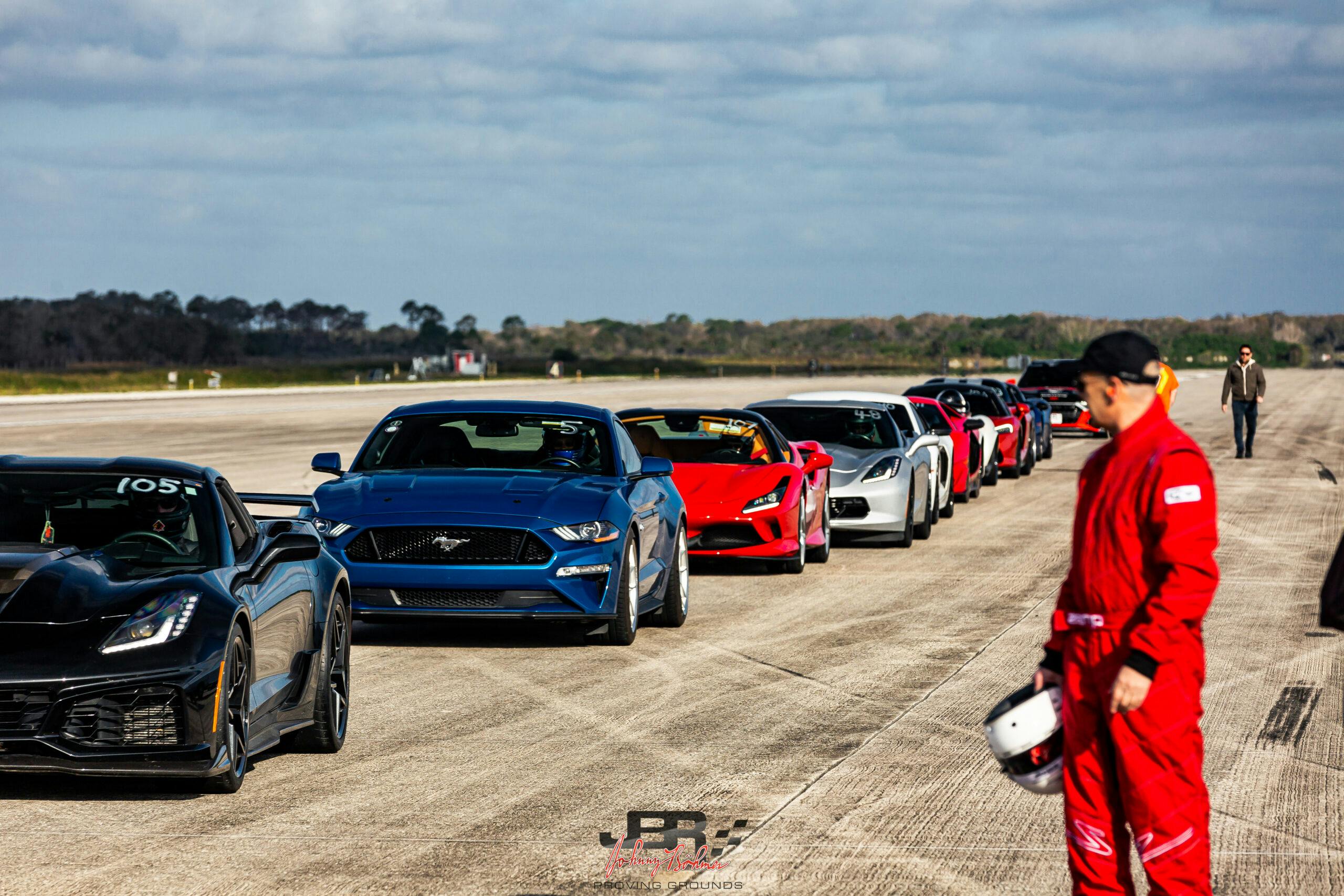

















Well I don’t live in Florida and I can’t attend but I do have a tire for the space shuttle in my garage. Used it for weight in my truck in the winter time It is about 190 pounds.
Make for a good conversation piece. Also won a few bets with it.
The Good for Six Landings on the side shows it is not just an airliner tire.
I got it when they were cleaning out a warehouse that did a lot of work for BFG. They build a bunch of displays for airports and shipped them out around the world. Two were left and I pulled it out of the trash for winter weight.
The track down in Florida looks like a bunch of fun. I would not want to get in trouble and go off track as I think it is all swaps there.
There are moats on each side, and they’re full of gators and probably some water moccasins, but I’m guessing the splash would scare them off for a little while!
I would love to see this place and the shuttles while we are at it.
Hi Steve, great article! Regarding the Blue Mustang, I never said that the engine is stock. It has a Whipple Stage 2 supercharger. The exhaust IS stock, Ford Active Exhaust.
Suspension is a Airlift 3H/3P airbag kit…
Thanks!
Fixed, thanks.
Never knew about this….curious to know how Mr Bohmer came to control a $140MM Federal facility?